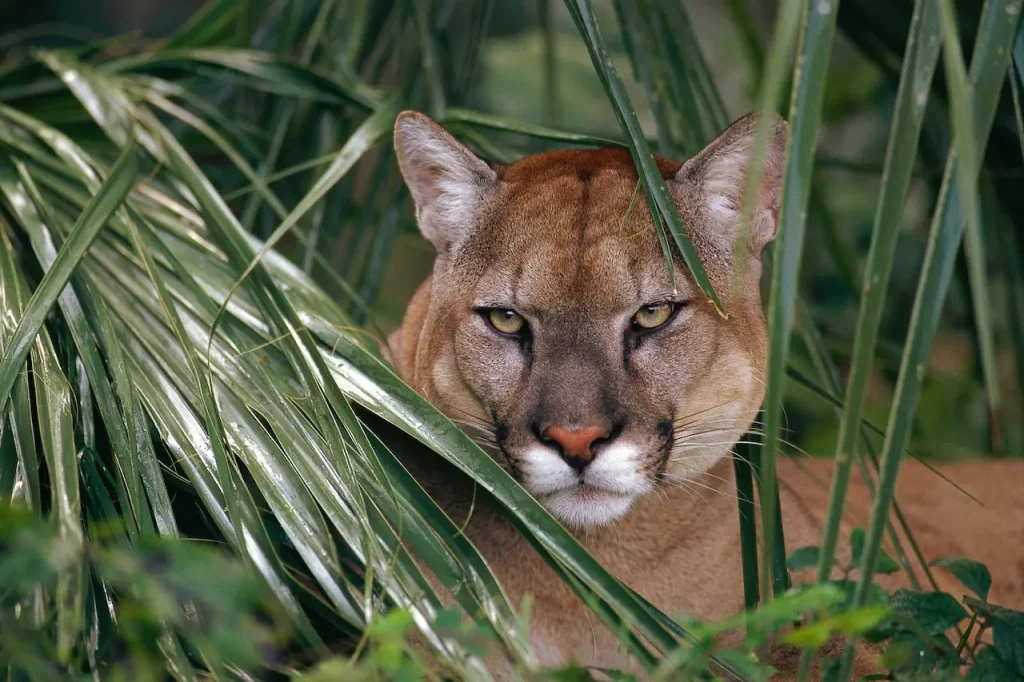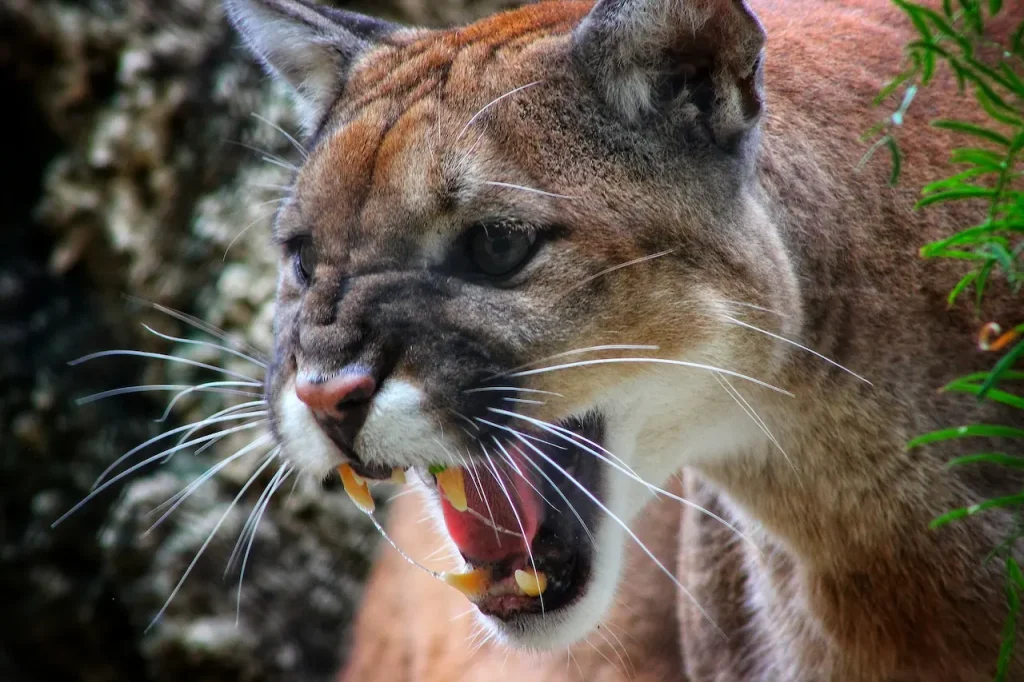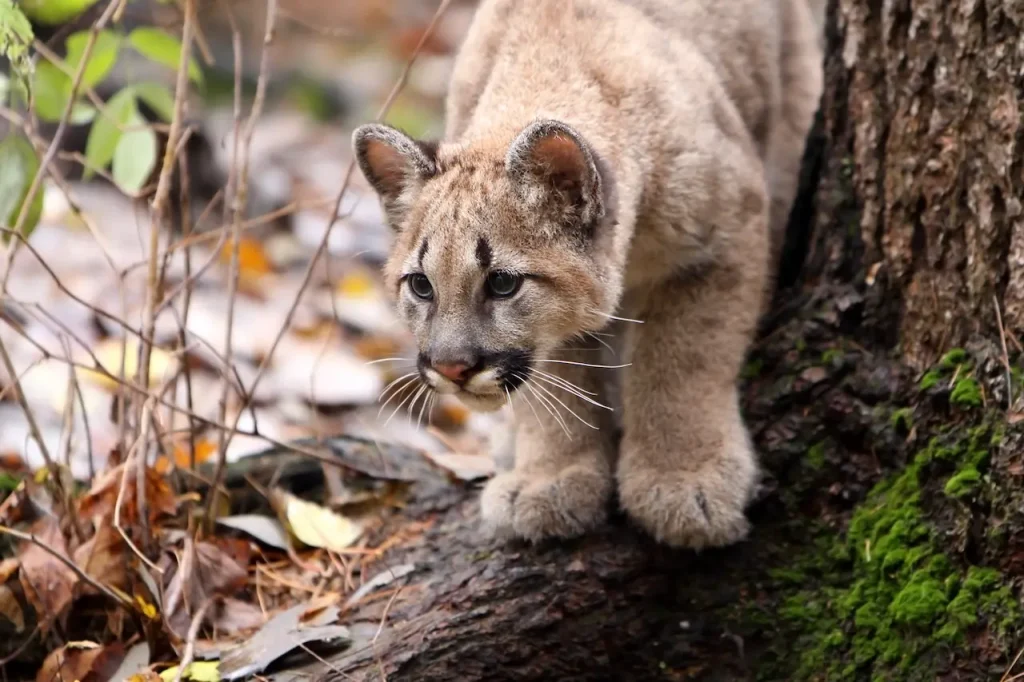What Eats A Cougar?
Categories
- Accipitridae (1)
- Acrididae (1)
- Algae (2)
- Alligatoridae (1)
- Amoebidae (1)
- Amphibians (3)
- Anatidae (1)
- Anguillidae (1)
- Arachnids (2)
- Bears (2)
- Big Cats (3)
- Birds (13)
- Bovidae (5)
- Bufonidae (1)
- Camelids (1)
- Cameras (1)
- Canines (13)
- Caridea (1)
- Carnivora (10)
- Castoridae (1)
- Cats (5)
- Cebidae (1)
- Cephalopod (1)
- Cervidae (2)
- Cetacean (1)
- Chondrichthyes (1)
- Crocodilia (2)
- Crustaceans (4)
- Culicidae (1)
- Cyaneidae (1)
- Dasypodidae (1)
- Dasyurids (1)
- Deer (1)
- Delphinidae (1)
- Desktop (1)
- Didelphidae (1)
- Dinosaurs (1)
- Dogs (13)
- Dolphins (2)
- Echinoderms (1)
- Education (10)
- Elephantidae (1)
- Equine (1)
- Erethizontidae (1)
- Erinaceidae (1)
- Farming (1)
- Felidae (5)
- Fish (5)
- Food Chain (31)
- Food Web (2)
- Formicidae (1)
- Frugivore (1)
- Gaming (1)
- Gastropods (1)
- Giraffids (1)
- Great Apes (2)
- Health Conditions (3)
- Herbivore (4)
- Hi-Fi (1)
- Hippopotamidae (1)
- Hominidae (1)
- Insects (10)
- Invertebrates (2)
- Keyboards (1)
- Laptops (1)
- Leporidae (1)
- Mammals (23)
- Marsupials (4)
- Mephitidae (1)
- Microchiroptera (1)
- Mollusks (2)
- Mongoose (1)
- Muridae (1)
- Nocturnal Animals (1)
- Odobenidae (1)
- Omnivore (2)
- Phasianidae (1)
- Phocidae (1)
- Plankton (1)
- Plants (2)
- Primate (1)
- Ranidae (1)
- Reptiles (7)
- Rhinocerotidae (1)
- Rodents (5)
- Salamandridae (1)
- Scarabaeidae (1)
- Sciuridae (2)
- Sharks (1)
- Shellfish (1)
- Sound (1)
- Spheniscidae (1)
- Suidae (1)
- Superfamily Papilionoidea (1)
- Theraphosidae (1)
- What Eats (5)
The cougar, also known as mountain lion, puma, panther, or catamount, is a large felid species native to the Americas. As an apex predator, the cougar has few natural enemies and occupies the top of the food chain.
However, some animals prey on cougars, mainly when the cougars are vulnerable, such as cubs or sick/injured adults.
In this comprehensive article, we will explore what eats cougars and also take an in-depth look at the cougar’s diet and feeding habits.
Table of Contents
ToggleWhat Eats Cougars? Natural Predators of the Cougar
While healthy adult cougars have no natural predators and reside securely at the apex of the food chain, certain animals may prey on them in some situations:
Other Cougars
Adult cougars are solitary and territorial animals. Resident cougars fiercely defend their home ranges against intruding cougars of the same sex.
Consequently, territorial disputes between two adult males or females can sometimes end in the death of one of the animals. Younger or weaker cougars usually back down from the aggression.
Additionally, newly independent juvenile cougars may be chased out or even killed by adult resident cougars of the same sex when they try to establish their territory. Transient juvenile cougars are at higher risk of mortality until they secure their own range.
Besides territorial battles, resident cougars have also been known to kill intruding cougars, even of the opposite sex. Thus, other members of their species do pose a predation risk to cougars under certain circumstances.
Gray Wolves
Gray wolves are efficient cooperative pack hunters, and a pack of 5-6 wolves can occasionally prey on a solitary cougar, especially if they can ambush it. Such incidences are however rare and exceptional given the risk of injury to the wolves.
But wolves have been known to kill cougar cubs and sick or injured adult cougars when the opportunity presents itself with minimal risk.
The presence of wolves also limits the cougar population and distribution in areas where both apex predators occur together. Wolves are very territorial and will try to chase away any trespasser. Cougars avoid confrontation with wolf packs and steer clear of zones with high wolf densities.
Bears
Bears, especially grizzly bears, may prey on a cougar’s cubs if they encounter them unguarded. Male cougars do not participate in rearing the cubs, so the mother cannot defend all her cubs at once from a determined bear attack.
Grizzly bears also regularly steal kills from cached carcasses of adult cougar’s prey. Confrontations between adult cougars and grizzly bears usually result in the cougar backing down from the larger bruin.
Ever wondered what eats a polar bear or what a polar bear eats?
Other predators
Besides the main predators mentioned above, other carnivores like coyotes, bobcats, and foxes may occasionally prey on cougar cubs if they find them unattended. Such attacks are still infrequent but can occur if the mother is away hunting. Sick or injured adult cougars are also more susceptible to predation from these smaller opportunistic predators.
Additionally, some large raptors, like golden eagles, can pose a sporadic threat to cougar cubs. There are a few records of eagles attacking and killing unattended cougar cubs. Other big raptors like owls may also rarely prey on very young cubs.

What Eats A Cougar What Do Cougars Eat
What Do Cougars Eat? Cougar Diet and Hunting Habits
Cougars are obligate carnivores and feed exclusively on meat. They are apex predators with a wide hunting range and adaptability. Their primary prey consists of large ungulates like deer, elk, mountain goats, wild dogs and sheep.
But they also supplement their diet substantially with smaller mammals like raccoons, coyotes, rabbits, hares, rodents, etc. Let’s take a closer look at the varied cougar diet and their hunting strategies.
Primary Prey – Large Mammals
Deer
Deer constitutes the major bulk of a cougar’s diet. Mule deer, white-tailed deer, and elk make up around 60-80% of its primary prey. In some areas where elk and mule deer are both present, cougars seem to prefer hunting mule deer even when elk are more abundant.
Cougars are expert deer hunters. They prey on adult deer, but prime targets are fawns, elderly, or physically weaker deer that are easier to catch and kill. Solitary by nature, cougars patiently stalk and ambush individual deer. They employ stealth and camouflage to get within striking distance without alarming the prey.
A cougar usually delivers the killing bite at the base of the deer’s skull, snapping the spinal cord for a quick death. The canine teeth penetrate directly through the neck vertebrae into the spinal cord. It then drags or carries away the massive carcass using its powerful jaw and neck muscles to consume it safely out of sight from other predators.
Bighorn Sheep
In some areas of western North America, bighorn sheep constitute the main prey species for cougars instead of deer. Most predation is on juvenile sheep or ill-mature rams. Even though an adult bighorn ram can weigh almost 300 pounds, a large cougar can successfully take them down.
Cougars employ their excellent rock climbing adaptability to stalk and ambush bighorns in steep, rocky terrain. Their tan coat provides ideal camouflage against similar-colored rocks. Bighorns habituated to living in high precipitous cliffs and ledges are still vulnerable to cunning cougar attacks.
Mountain Goats
Where they co-exist, cougars prey on mountain goats as well. Both adults and kids are taken. Again, cougars rely on stealthy ambush tactics to attack solitary goats, especially in steep terrain. The cougar’s rock climbing agility allows it to access locations where mountain goats feel relatively sheltered.

What Eats A Cougar
Secondary Prey – Small & Medium-Sized Mammals
While large ungulates comprise their primary food source, cougars supplement their diet substantially with a variety of smaller mammals. These include:
- Small canids – Coyotes, foxes, raccoon dogs
- Rodents – Porcupines, beavers, marmots, prairie dogs, ground squirrels
- Rabbits and hares – Jackrabbits, snowshoe hares, eastern cottontail, brush rabbits, etc.
- Carnivores like raccoons, ringtails, skunks etc.
Depending on locale and availability, small mammals can constitute almost a third of the cougar diet. Juvenile cougars start off hunting such smaller prey before graduating to large game.
Small prey also helps tide over low cycles in the large mammal populations. Cougars help check the smaller predator populations like coyotes and, in turn, compete with them for the small mammal prey base.
Other Food Sources
Livestock
In areas that border human settlement and livestock rearing, cougars may attack domestic animals like cattle, sheep, goats, llamas, alpacas, horses, and pigs. Typically, they prey on foals, calves, colts, and other young animals. Attacks on mature livestock are rarer but occur at times.
Such incidents bring cougars into conflict with humans. But mostly, they are a result of dwindling natural prey populations and the cougars’ adaptability to switch to abundant livestock. Effective predator-proof livestock enclosures and other deterrent methods can mitigate such attacks.
Carrion
Cougars readily scavenge on carrions or animals already killed by other predators like wolves, coyotes, or bears. Scavenging helps them maximize calorie intake while minimizing energy expenditure. They often aggressively displace other predators from their own kills.
Conclusion
The cougar is a powerful and versatile apex predator that occupies a vital ecological niche in its habitat. It plays a key role in regulating populations of large herbivore prey as well as smaller carnivores.
Learning about its predatory interactions and adaptations provides critical insights into the functioning of the associated food webs and ecosystems.
Ensuring the long-term viability of cougar populations through wildlife corridors, connected habitats, regulated hunting, and protected reserves is paramount.

